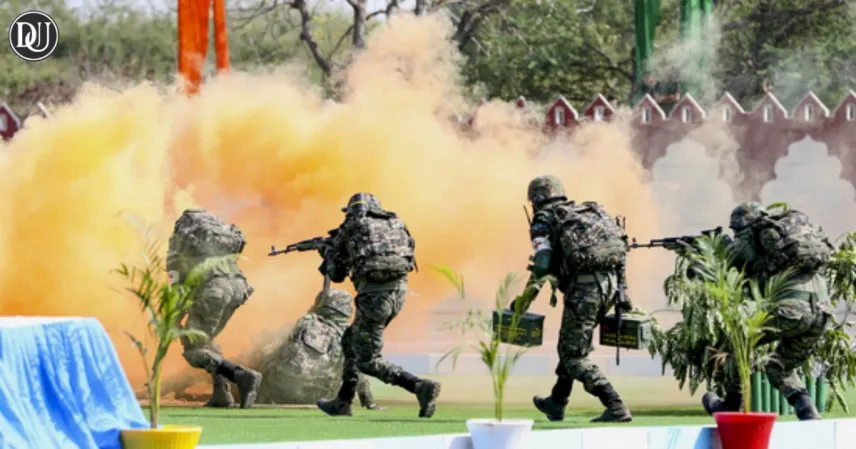India is gearing up for a significant nationwide mock drill on May 7, 2025, marking the first such exercise since 1971. The mock drill will take place across 244 districts, spanning all states and union territories, including critical regions like Delhi, Jammu & Kashmir, Punjab, Rajasthan, and Uttarakhand. The Ministry of Home Affairs (MHA) has directed this comprehensive mock drill, which aims to enhance national security preparedness amidst growing tensions with Pakistan.
Key Objectives of the Mock Drill
![]()
The mock drill has been designed to serve multiple purposes, all aimed at improving India's readiness to respond to potential national security threats. First and foremost, the mock drill will test emergency response systems, including the activation of air raid sirens and the simulation of blackouts. This exercise will assess the effectiveness of emergency communication and power disruption protocols, ensuring that authorities are equipped to respond swiftly to any crisis.
Additionally, the mock drill will conduct large-scale evacuation exercises. Civilians in high-risk zones will practice moving to safe areas, enabling authorities to evaluate and refine their evacuation plans. This will ensure that the public knows exactly what to do in the event of an emergency, particularly in areas that may be directly impacted by military or terror-related threats.
![]()
Another key component of the mock drill is public education. The exercise will focus on training civilians, including students, in basic civil defence measures such as sheltering techniques, first aid, and maintaining composure during emergencies. By raising awareness, the mock drill aims to empower the population with life-saving skills that can be crucial during a crisis.
Finally, the mock drill will test the ability to camouflage critical infrastructure. This part of the exercise will simulate strategies to hide vital installations from aerial surveillance and potential enemy attacks, which is an essential aspect of national defence.
Background and Significance
![]()
This nationwide mock drill comes in the wake of heightened tensions between India and Pakistan. The recent terror attack on April 22, 2025, in Pahalgam, which resulted in the tragic loss of 26 Indian soldiers' lives, has further strained the relationship between the two nations. In addition, Pakistan's missile tests and cross-border skirmishes have escalated the situation, prompting India to take proactive measures to prepare for possible future threats.
The civil defence mock drill is a proactive step to ensure that both civilians and authorities are prepared to handle emergencies effectively. The exercise reflects a broader strategy to integrate civil preparedness with military readiness, emphasizing the importance of a comprehensive national security approach.
Participation and Execution
![]()
A wide range of participants will be involved in the mock drill, including district authorities, Civil Defence wardens, Home Guards, National Cadet Corps (NCC) members, Nehru Yuva Kendra Sangathan (NYKS) volunteers, and students from schools and colleges. These individuals will engage in simulated scenarios to test and improve their response strategies. The mock drill will be overseen by local government officials and emergency services, ensuring that the activities are carried out smoothly and that any challenges encountered are addressed promptly.
Looking Ahead
The nationwide mock drill is an essential part of India's broader strategy to enhance national security. By involving local communities in preparedness activities, the exercise fosters a culture of resilience and vigilance. The insights gained from this mock drill will inform future training programs and policy decisions, helping create a more secure and prepared nation.
As India conducts this critical mock drill, it highlights the nation’s commitment to safeguarding its citizens and maintaining national security in a volatile global landscape. The drill on May 7, 2025, will serve as a testament to India's determination to be prepared for any challenges that may arise in the future.










